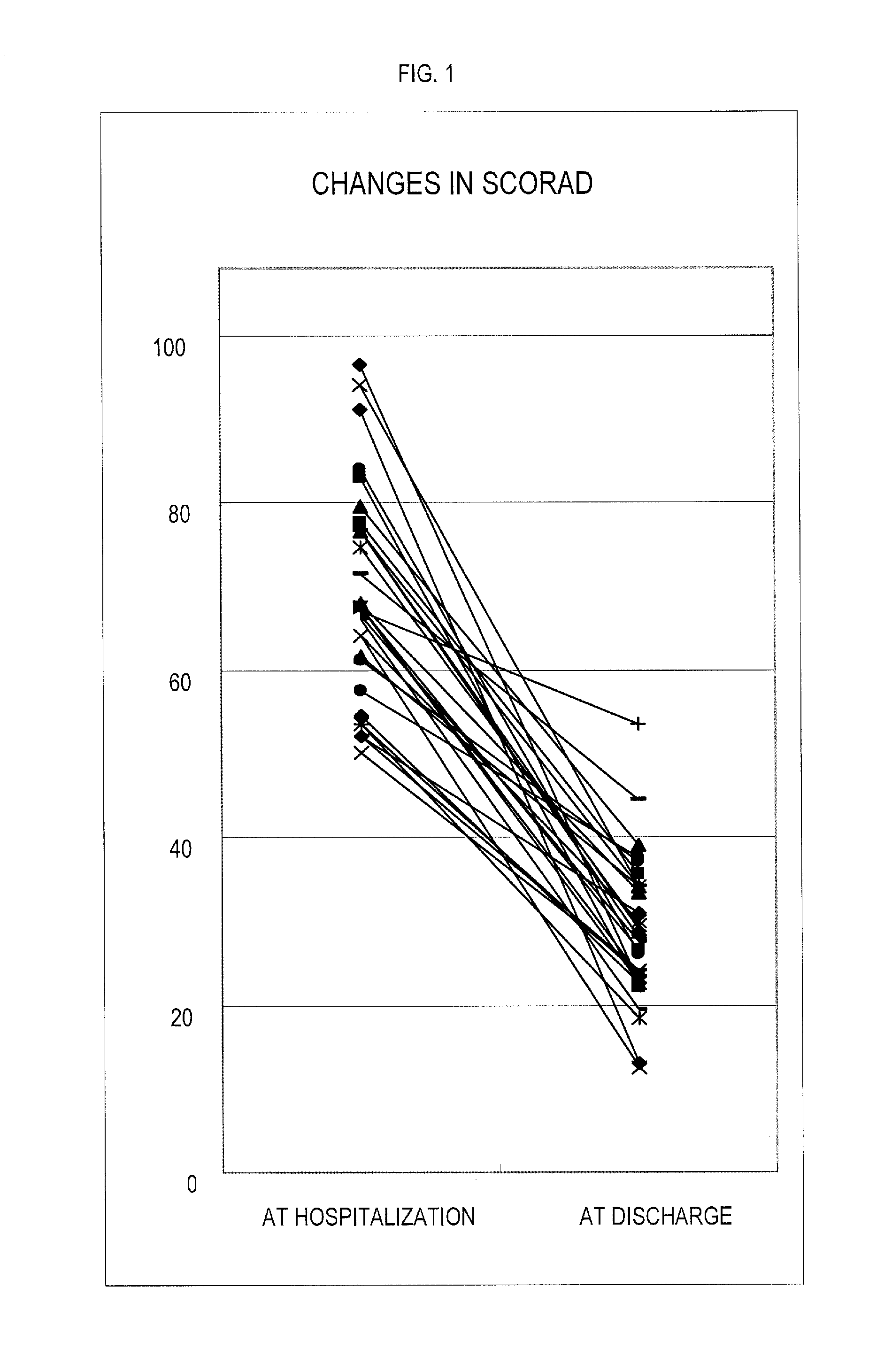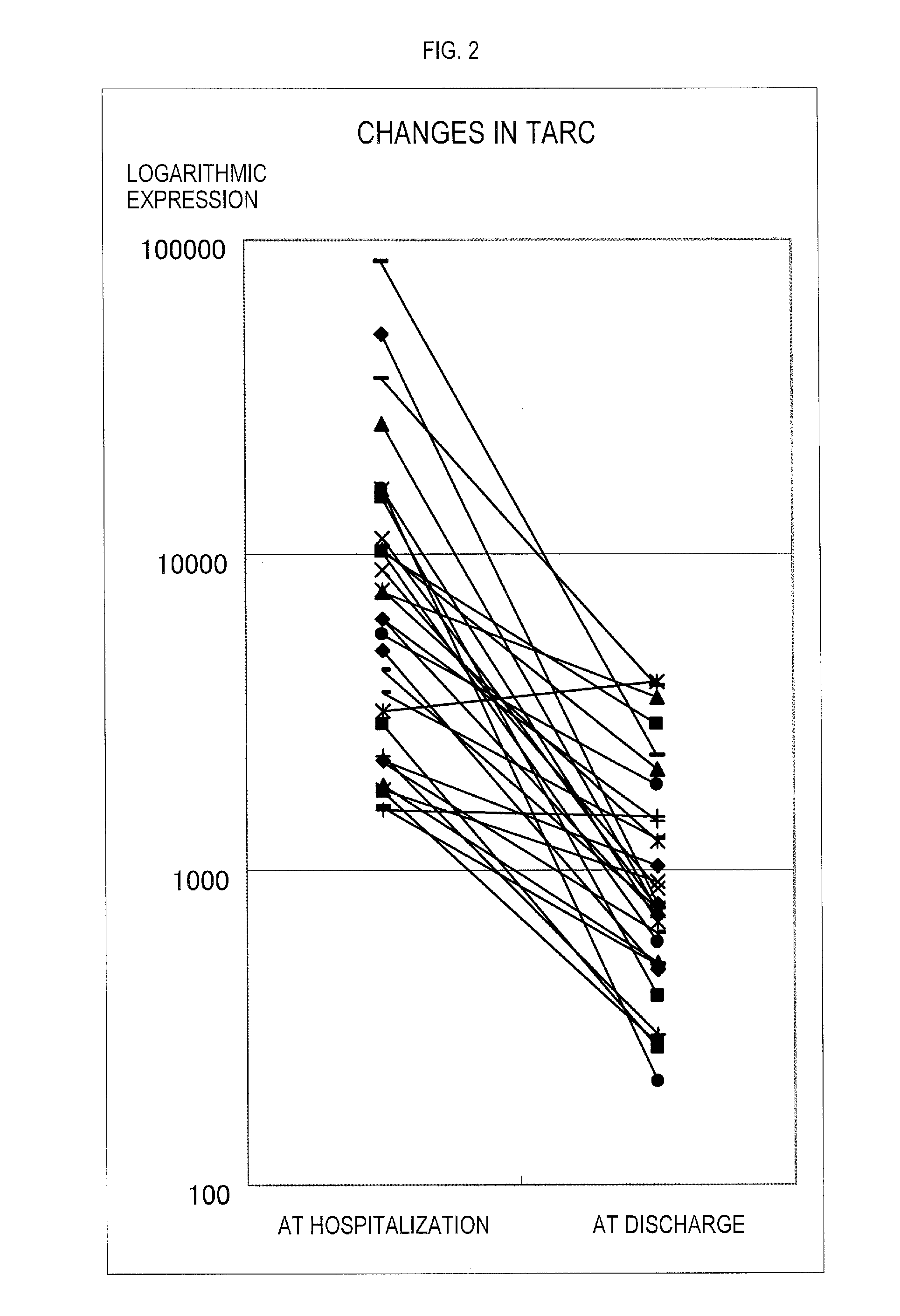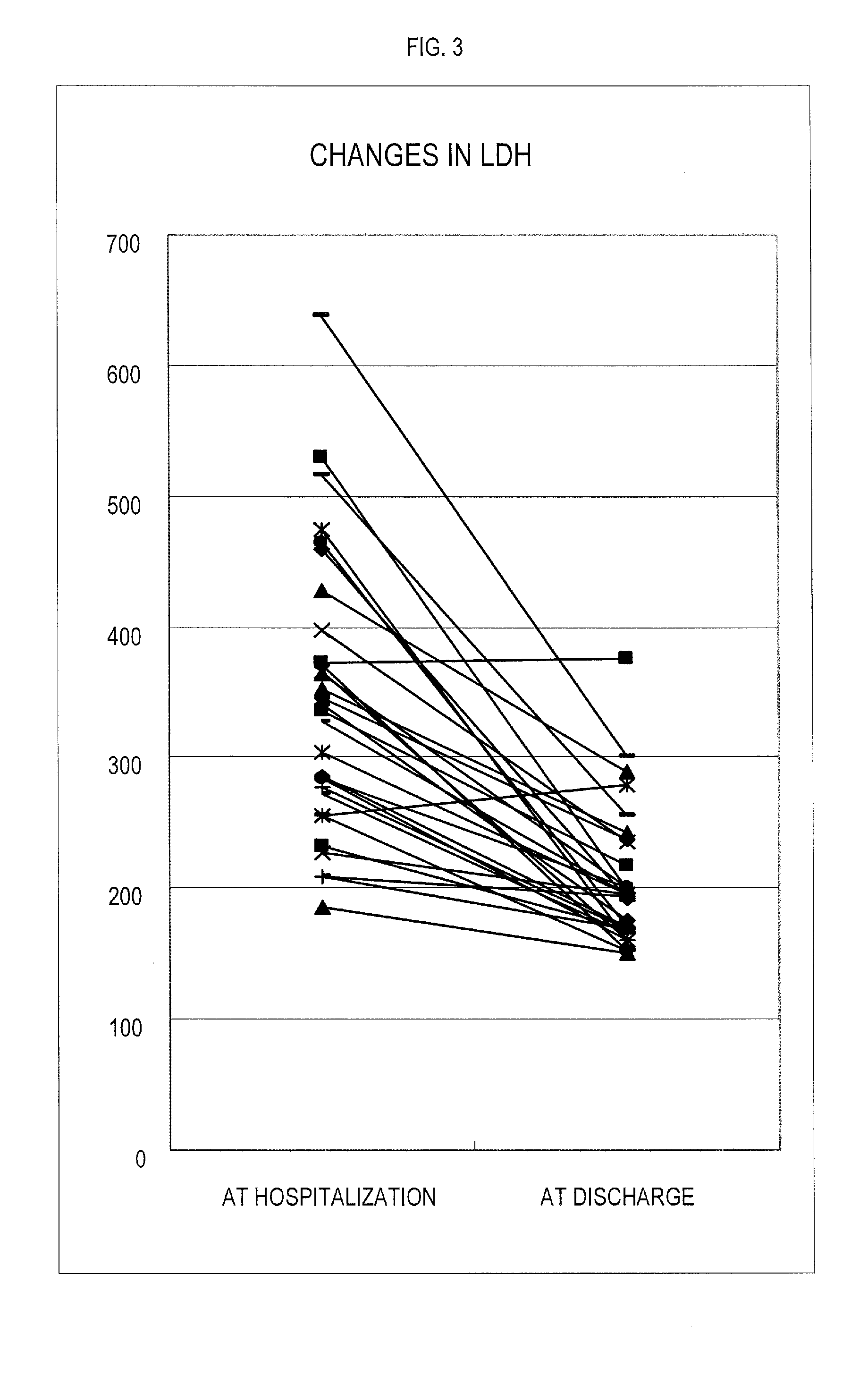Many problems associated with AD treatment, such as the treatment of cases not responding to topical
steroid therapy and side effects associated with long-term use of
steroid, in particular, remain unsolved.
The social maladjustment that patients experience physically and mentally because of long-term chronic dermatitis has also been highlighted as a social problem.
However, this therapy can actually weaken the
skin immune system to cause
skin fragility, and encourage the growth of pathogenic fungi, as its side effects.
Probiotics such as
lactobacillus are commonly used by the general public; however, viable microorganisms are rarely used in the field of
medical treatment.
However, since it was a completely novel therapy, the inventor had been hesitant to publish this therapy until the effects and safety thereof were assured.
However, no subject was using topically or orally administered steroids, topically administered
tacrolimus, oral immunosuppressants such as cyclosporine, or topically or orally administered
antifungal agents.
Although the SCORAD scores improved in all subjects, subjects with improvements of <30% in the SCORAD scores and TARC levels were considered non-effective cases when taking into consideration the improvement effects by hospitalization itself.
From 18 years of age, the patient underwent the topical administration of steroids and
tacrolimus for generalized dermatitis; however, the symptoms were not well controlled.
The generalized dermatitis had been persistent and did not improve despite the patient undergoing various types of alternative therapies.
Starting in May 2010, the symptoms worsened further with persistent
chills, and the patient was no longer able to engage in work duties.
The patient also took oral steroids; however, his condition gradually deteriorated, with rubefaction and
effusion changes mainly over his
trunk.
In January 2011, he began oral
antibiotics and
steroid injections; however, little improvement was observed in his
skin condition.
However, it is difficult to control symptoms with
antifungal agents alone in the actual treatment and, especially, long-term effects cannot be expected.
While it is known that the inhibition of the causative
bacteria that forms the
allergen from infecting the skin could treat the actual cause of the
disease, no clear treatment method has been discovered.
Many patients have no choice but to undergo
oral administration of steroids or cyclosporine; however, dosage reduction and / or
drug cessation can then become difficult, with long-term usage then putting patients at risk of systemic side effects.
BST is a safe and extremely effective natural therapy, but its main disadvantages are the time and effort required.
In addition, BST could be used in infants to contribute to the formation of a healthy
immune system; however, clinical examples of this are scarce at present.
People used to constantly come in contact with Bacillus; however, these surfaces are now covered with chemical substances and
asphalt, with
dirt even disappearing from school grounds.
As humans are primarily part of nature, the artificial environments brought about by advances in civilization appear ill-suited to our survival.
While this spa therapy was also being conducted for AD, the inability to obtain reliable results impeded its spread as a treatment method.
BST needs to be performed on a continuous basis because the patient's allergic constitution may not necessarily have been cured even if the AD symptoms appear to have once completely improved; therefore, a relapse of AD could occur if treatment is discontinued.
This will reduce the
water quality and cause pathogenic microbes to develop, which could then exacerbate dermatitis.
 Login to View More
Login to View More  Login to View More
Login to View More 


